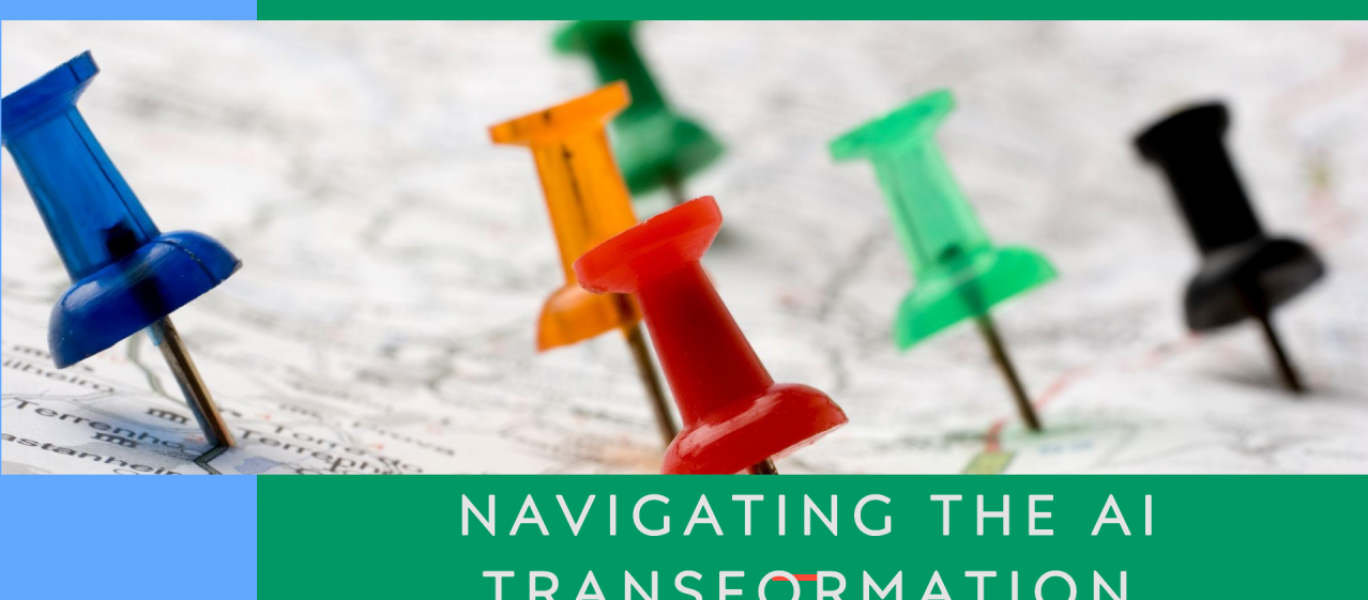It has been a little over a year since the launch of ChatGPT when AI started to get mainstream acceptance as a transformative technology that has the potential to fundamentally reshape industries and redefine the bounds of what’s possible with technology. Yet despite the hype, a paradox has emerged. A recent study we read suggested that approximately 85% of companies view generative AI (GenAI) as a top priority, signaling a widespread acknowledgment of its strategic importance. However, diving deeper reveals a landscape marked by hesitation and a lack of strategic direction. Only about 30% of these companies possess a clear vision for leveraging GenAI, highlighting a gap between aspiration and actionable planning.
This discrepancy is further compounded by the cautious approach many organizations adopt towards GenAI’s high-value, high-risk use cases. Only a small fraction, around 35%, are venturing into the development of new products or services powered by GenAI, despite the significant opportunities these initiatives present.
Moreover, the readiness to manage GenAI-specific risks, particularly around data security, remains a critical challenge. An overwhelming majority of non-tech companies, approximately 85%, lack the necessary protocols and capabilities to navigate these waters safely, underscoring the urgent need for robust data governance and ethical frameworks.
Our previous editions of DemystifAI have focused on the historical context and the technology behind AI. In this installment of our “DemystifAI” series, we pivot towards the practicalities of AI transformation, focusing on the actionable steps that can get your organization out of contemplation to action.
1. Defining Your North Star
Ok I know we said action rather than contemplation, but this one is important. As with any transformation, your AI journey will need a clear and compelling vision. It’s not just about integrating new technologies but reimagining how these advancements can propel your business forward. Reflect on what AI means for your organization. Is it about enhancing customer experiences, optimizing operations, or maybe pioneering new business models? Define your ambition boldly.
Alignment across your leadership team is paramount. It is essential to establish a shared understanding of your AI goals and a clear alignment on what defines success. This shared reality becomes the bedrock of your journey, fostering a unified approach to overcoming challenges and seizing opportunities… and let us be honest – secures those all-important investment dollars.
2. Conduct an AI Readiness Assessment
Before diving into the AI deep end, assess your organization’s current state. This includes evaluating your data infrastructure, technical capabilities, and organizational culture. Understanding your starting point is crucial for identifying gaps and prioritizing areas for immediate attention. It is very important that you engage a cross functional team when conducting this assessment.
You don’t have to solve identified gaps up front, but you do need to know what you don’t know and start to prioritize either plugging any holes or building new muscle where your organization may be especially weak. The good news is that a lot of this can be done in parallel with some planning.
3. Assemble a Cross-functional AI Task Force
AI transformation is not the sole responsibility of IT; it requires cross-functional collaboration. Assemble a task force that includes IT, business units, data security, legal, data scientists, and ethicists. This team will lead your AI initiatives, ensuring they align with business objectives and ethical standards. Most of our clients start with a team that is not fully dedicated and in most cases the excitement around AI means there are plenty of volunteers. In the early stages this is a great but be conscious that purely volunteer teams that are not dedicated can become quickly overwhelmed as the pace of the program increases. This is a space where a seed of outside help is a huge accelerator.
4. Cultivate a Test-and-Learn Culture
The path to AI maturity is iterative so identify and prioritize quick wins. Quick wins serve dual purposes: they demonstrate the value of AI to your organization and build momentum for larger initiatives. Look for use cases that promise immediate impact with manageable effort. These could range from automating repetitive tasks to enhancing customer service with chatbots. Ideally quick wins align with your strategic priorities. These initial pilots are your sandbox for innovation, allowing you to learn, adapt, and iterate, while delivering some business value.
With your quick wins identified, develop MVPs to test and learn from these use cases. MVPs allow you to experiment with AI solutions in a controlled environment, gather insights, and refine your approach based on real-world feedback. Oh and an MVP is just that, be careful to manage expectations.
5. Establish Frameworks for Secure and Ethical AI Use
As you pilot AI initiatives, it’s imperative to consider the security and ethical implications of your technologies. Develop a framework that addresses data privacy, transparency, security, and fairness. Key to this endeavor are actionable steps such as
- Developing ethical AI principles that mirror your organization’s core values,
- Implementing or adapting a comprehensive data governance framework,
- Conducting bias and fairness assessments of chosen models, and
- Enhancing the transparency and explainability of AI systems.
These measures are not only about compliance but also about aligning AI initiatives with ethical standards and societal norms. They will guide your AI development and inform citizen developers, ensuring responsible use and fostering trust among stakeholders.
6. Plan for Upskilling and Talent Development
AI transformation is as much about people as it is about technology. Building or enhancing your team’s capabilities is crucial, as is fostering partnerships that can amplify your efforts. Whether it’s through hiring, training, or collaborating with outside partners with AI credentials, ensure you have the expertise to bring your vision to life.
The success of your AI transformation depends on having the right talent. Identify skills gaps within your team and invest in training and development. Additionally, consider hiring AI specialists to fill critical roles and provide expert guidance.
7. Scale with Confidence
As you validate the success of your MVPs and refine your approach based on learnings, begin to scale your AI solutions across the organization. Scaling involves not just technological deployment but also managing change, ensuring widespread adoption, and continuously monitoring impact.
We have found that even the most impactful AI use cases struggle with adoption (this is despite the initial excitement). Change management and training as always is key.
Starting your AI transformation journey can seem daunting, but by focusing on these emerging best practices, you can navigate this complex landscape with confidence. Begin by assessing where your organization currently stands in terms of AI readiness. Engage with stakeholders across the business to align on the vision and strategic objectives for AI. From there, prioritize initiatives that offer the most significant value and align with your capabilities. In parallel establish security and ethical frameworks and start to upskill your team.
Remember, AI transformation is a marathon, not a sprint. It requires commitment, investment, and a willingness to learn and adapt. As your organization embarks on this exciting journey, we’re here to share insights, experiences, and best practices to support you every step of the way. Our AI practice focuses on helping you chart your path, and implement your transformation. With a deep Agile bench we can also help transform your delivery pipeline.
Author: Ashwin Ratanchandani is a Managing Director at Notch Above Consulting.




